 These are the best and most interesting finds I’ve found on the web this week that relate to prepping, survival, off-grid, self-sufficiency, defense, or whatever else I think you’ll be interested in looking at.
These are the best and most interesting finds I’ve found on the web this week that relate to prepping, survival, off-grid, self-sufficiency, defense, or whatever else I think you’ll be interested in looking at.
As a part of my always experimenting, I’ve decided to start keeping track of some of the best articles I find on the web and collect them in one place. If this works out, I’ll do this every week or maybe some other time frequency.
Why? I do a LOT of research on the web. Some of this stuff is really interesting to me personally and some of it I post on my facebook page, my google+ page, my twitter page, or on my Pinterest page. If you aren’t following these, you should pop in there real quick and do that. I’ll wait.
I post different things to different places because each has their own following and focus. Then I started thinking; the whole point of those social media outlets is to support this website but I rarely list articles I find unless they pertain to the article I’m writing that day. I don’t really have a way to capture those articles for you guys. Some of this is really interesting!
[Click >>]
A lot of places do this on a daily basis, like SHTF Preparedness, for example. Matty scours the web and finds the best articles for you and posts them up for you to read. Unlike most sites like this, he gives his own take on what you’re about to read and his own thoughts.
I had thought about doing something similar but I don’t want to stray too much from what I’m already doing. I figure if you’ve taken the time to come to Graywolf Survival, you should be rewarded for your efforts with something that causes you to stay around a while. Matty can be relied upon to have posts up pretty much every single day, if not several times each day. I can’t. If you see an article out there on the web, you know it’s something that you need to stop what you’re doing and click the dang thing ricky-tick.
So then I had the bright idea (That tends to happen after a few Guinness Extra Stouts): Why not just capture these in a periodic article? I could have it both ways. I’m reading these articles anyway and it doesn’t do you much good for me to bookmark it in my ‘Links For Later’ folder unless you’re a hacker.
Because it’s a site-wide kind of thing, and you people are pretty diverse, these posts will be quite diverse as well.
So that’s what this is. It’s the first. Here are some of the best articles I’ve found out there this week:
I came across an interesting video I saw on TED. TED is pretty awesome, btw. You can find a ton of them on Netflix.
This one was about the LIFESAVER filtration water bottle. A very promising-looking water filter.
What I like about it is the pump, meaning you can squeeze water through tinier pores. What I don’t know though is how it compares to the Sawyer Mini that I reviewed previously.
Toyota water crossing
This is pretty awesome. I’ve gone through a lot of deep water in my years of off-roading but nothing this deep without a military vehicle.
In case you’re interested, this is what’s primarily responsible for it being able to do that for it being able to do that, although they would have water-proofed their engine electronics as well. I did a LOT of driving through creeks with my 4×4 when I was growing up in PA but never went that deep (except for the time I fell through the ice in my Ranger on a pond in Ohio, but that’s another story).
Antibiotic Resistant Bacteria Now in Every Region of the World, WHO Says
This is scary stuff.
Selected quote from the article:
In a first-of-its-kind report, World Health Organization (WHO) announced today that bacterial infections that can’t be treated with the antibiotics of last resort have emerged in every part of the world, which means that patients who pick up E. coli, pneumonia or staph infections don’t have an effective way to control their illnesses. In some countries, more than half of people infected with K. pneumonia bacteria won’t respond to carbapenems. A similar percentage of patients with E. coli infections won’t be helped by taking fluoroquinolone antibiotics.
Personally, I’m not a fan of taking antibiotics. I had a large bottle of Cipro when I was in Africa and never took any even though I was sick almost every day there. Chemicals like that can really mess you up.
I’m more of a fan of taking natural medicine. A great resource to learn bout natural antibiotics is Herbal Antibiotics, 2nd Edition: Natural Alternatives for Treating Drug-resistant Bacteria. Unfortunately, we don’t know enough about natural remedies to completely discount the prescribed ones so if the natural stuff doesn’t work, I do sometimes end up heading to the doctor.
Living Microalgae Lamp Absorbs CO2 from the Air
This is pretty cool. Algae is used in a lamp that puts out light as a natural byproduct.
Selected quote:
The lamp is designed so it can store the energy from photosynthesis for later use. That way, when it’s transported into low-light areas, it can glow without the need for any external power source. A single lamp could absorb roughly a ton of carbon from the air in just one year — the same amount as 150 or 200 trees. If these lamps could go into mass production, they could go a long way toward fighting climate change and reducing air pollution.
The ‘Drinkable Book’ Can Save Lives & Provide Purified Water for Years
This book has tear-out pages that can be used to filter out 99.9% of bacteria and can provide a person with four years-worth of clean water.
Selected quote:
The Drinkable Book is more than just a book – it is an educational manual that teaches the importance of water filtration and the fundamentals of keeping a clean water source. It is also a filtration tool. Each page of the book doubles as a water filter that is capable of killing the bacteria that cause deadly diseases. Water that is filtered through the paper has a bacteria count reduction of 99.9%, making the filtered water comparable to tap water in the United States.
Plant-e: living plants generate electricity
Pretty cool. I hope they continue to develop this technology. Imagine living off the grid by powering your home with the plants you eat.
Bee activists swarm Home Depot and Lowe’s
Speaking of bees, Lowes and Home Depot continue to sell pesticides that have been proven to kill bees – and they’ve known it for at least many months. This situation is now escalating.
Quote from the article:
Petitions with thousands of signatures are being delivered to the home-improvement retailers this week, demanding they stop selling the pesticides—called neonicotinoids—along with any plants in the stores that have been treated with them. Neonicotinoids are the most widely used class of pesticides in the world.
The declining bee population is one of the biggest threats we face today. If bees continue to die, we will very quickly run into a very bad food shortage that will cripple our economy.
41 Camping Hacks That Are Borderline Genius
There were actually a couple of new ones in here. A couple stupid ones too, like the Mountain Dew light thing that hasn’t worked for years. Great for a quick read though.
Here’s a sample of one of their hacks:
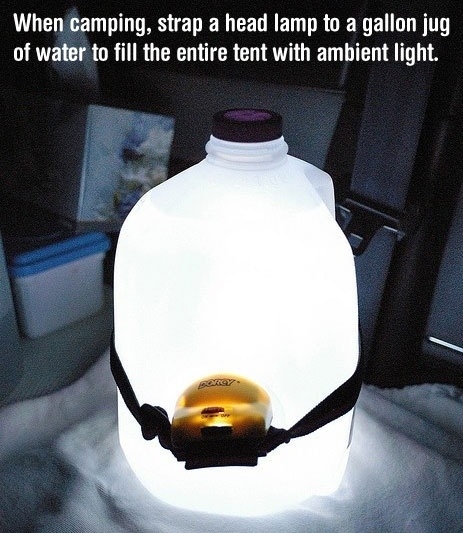
I haven’t tried the one in the pic but it seems feasible. I do always have a headlamp in my toiletry kit. I bought the Petzl E02 P2 e+LITE several years ago when I deployed to Iraq. It’s super convenient when you’re setting up a camp. Next time I go camping though, I’m gonna try it.
The legislation, SB 1476, was introduced by Sen. David Farnsworth, R-Mesa. It includes the type and quantity of food, water and medical supplies that each person should stockpile in case an EMP occurs over the U.S.
Finally! Amazon is starting to get the idea that preppers are a force to contend with. They now have an entire section of camping and tactical stuff, all in one place, even if it is actually targeting the zombie phenomenon. Don’t get me wrong, it’s kinda fun to ‘what if’ scenarios using a zombie apocalypse but some people are a bit silly with it. There are quite a few useful items in this section though.
Well, that’s all for this time. If this post turns out to be popular, I’ll do this more often. Please just comment below about what you thought about it.
73!

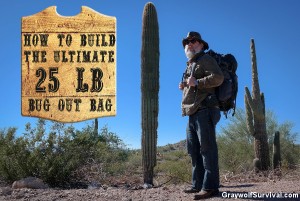

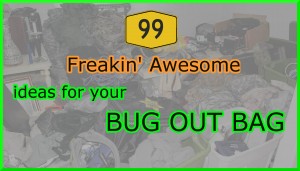
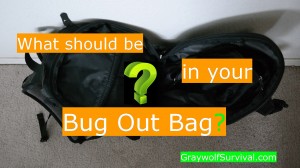

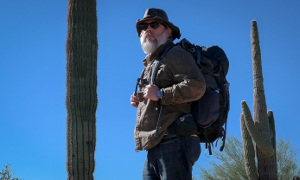
I enjoyed this roundup, and would like to see more posts like this. Thanks!
Thanks. I didn’t start keeping track until mid-week so I should have a better list if I do this again.
I like the link round-up!
Looks like the LifeSaver Bottle filters down to 0.015 microns (best), the Sawyer system to to 0.1 microns, and LifeStraw to 0.2 microns (worst).
LifeSaver Bottle is by far the most expensive ($214), Sawyer the next most expensive ($20.78) and LifeStraw cheapest ($19.99).
Sawyer has by far the longest filter life (100,000 gallons), followed by LifeSaver Bottle (6,000 liters), with LifeStraw coming in last (1,000 liters).
Without having actually tried them, I’d say Sawyer is probably the best bet, but it might not be a bad idea to get the LifeSaver bottle if you’ve got money to blow and you’re worried about viruses and smaller bacteria (depends a lot on what’s endemic to your region, how your immune system is, if you have really old/young/vulnerable family members, etc.)
HAD to do this after watching that video!
lol